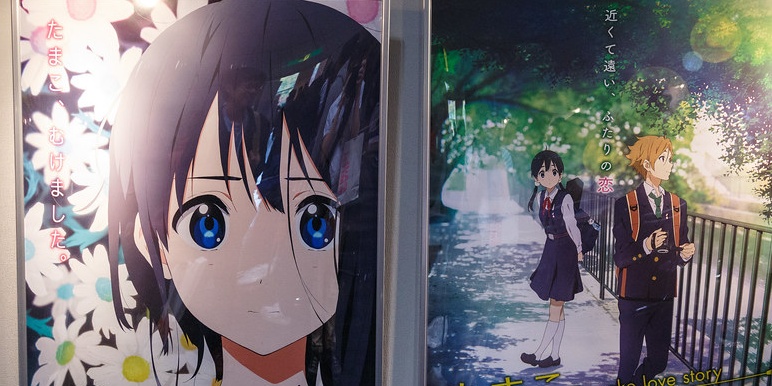As Covid-19 swept the globe in spring of 2020, many businesses went into shutdown with very few industries spared. The global TV and entertainment sector saw production of live shows ground to a halt, and is predicted to lose $160 billion of growth over the next five years.
The animation industry is a notable exception. With technicians able to work from home, productions are safe and cost-effective to create. Many animation studios have therefore thrived during the pandemic, continuing on a rapid growth trajectory that’s been further accelerated by the crisis. And with the majority of the global audience trapped at home for the best part of a year, the demand for content has outstripped supply.
Animation domination
Even before the pandemic, the industry was already on the rise. Over the past few decades, animated productions have started to enter spaces typically reserved for live action.
Adult animation has grown in popularity and taken a larger share of programming schedules. Following in the footsteps of pioneers such as Fox (The Simpsons, Family Guy), cable channels turned their focus to adult animation during the late ‘90s (for example, Comedy Central’s South Park) and now streaming sites are turning out successes in the genre such as Netflix’s BoJack Horseman. HBO Max reportedly invested $500 million in new adult animated projects, recently signing a new cartoon series based on Scooby-Doo’s Velma character.
And in Covid times, this recent wave of animation domination has been accelerated due to production constraints. Live action American sitcom Black-ish included a half-animated special in autumn 2020. We’ve even seen the music industry re-embrace animation, for example in Dua Lipa’s recent Hallucinate video.
Collaboration is king
Cross-studio collaboration, often across countries, has been a key feature of the industry during the pandemic. Netflix has announced that Sonic Prime, their new 3D animated Sonic the Hedgehog series, will be produced by Japan’s SEGA, Canada’s WildBrain, and the US-based Man of Action Entertainment. The series will be animated at WildBrain’s Vancouver studio, and SEGA and WildBrain will partner up on production, distribution and licensing.
Japan’s Flying Ship Studio and the UK’s Cloth Cat Animation are teaming up on a series for preschoolers, Chiruta. French animation studio Superprod (White Fang, Song of the Sea) acquired a majority stake in Italy’s Red Monk Studio, and Superprod plan to turn it into a major animation player. The Milan-based studio will work with both homegrown and international artists, and it will manage all stages of development and production of animated series and films. Israeli Pil Animation Studio is also collaborating with local media company Ananey Communications on a partnership with Australian and New Zealand production company Sweetshop & Green. They plan to enter the children’s animation market with a new series called Living With Landlubbers.
The demise of Blue Sky Studios
However, the last year has been tough for some. Disney was forced to shut Blue Sky Studios’ (Ice Age) following pandemic-induced financial pressures. It’s been reported that it couldn’t sustain a third feature animation studio. With its 34 year legacy, the closure is felt keenly across the industry, with hundreds of layoffs and many cancelled films that were already in production.
Thriving beyond Covid
During the pandemic, Netflix’s stock soared 17% to a record high of $587, and the streaming service made public its desire to rival Disney in terms of animation production. Animation is clearly a focus for the major players, presenting a huge opportunity for the entire industry. And by partnering with studios in different countries, you’re uncovering a wealth of talent, new markets, perhaps even access to specialised software, ways of working, as well as sources of funding. The good news is, with much of the world working from home, international collaboration has never been easier to manage.
But it’s not all plain sailing. Many studios have had to adapt to the changing environment, adjusting their processes to fit remote working. Some of the challenges studios have needed to overcome are:
No access to soundproof studios - Recording studios are soundproof, whereas most employees’ home office setups are not. Getting rid of any background noise can be especially difficult if you have children at home, or perhaps live near a busy road or playground. The cast of Bob’s Burgers improvised with pillow forts during the pandemic, to provide a soundproof space to record. In the longer term, studios looking to continue with a remote setup might want to invest in more reliable solutions for home recording.
Slower turnaround times - Many studios reported that home recording sessions were taking three to five times as long as a studio one. You’ll need to build in extra time for your remote productions. Experts are also predicting growth in “automated dialogue replacement,” or “ADR”, in which an actor dubs over an already completed scene.
Bandwidth issues - Consistently strong and stable global internet connections are elusive. Internet speed is therefore a major challenge when working across geographically dispersed teams. To avoid further slowing down your processes, it’s critical to ensure that everyone in your team has access to a strong internet connection with a high enough bandwidth for uploading large files.
Increased risk of cyber attacks - If you’re working on high-profile productions across multiple locations, you’re also at greater risk from cyber attacks. We recommend investing in reliable cybersecurity solutions, and taking steps to protect your employees’ systems from security breaches. Otherwise, you risk details of your next top secret project being leaked to the world.
Managing international payments
Studios collaborating internationally should also consider how they will manage costs and stay in control of payments to partners, suppliers, contractors and staff in their local currency.
Businesses can send money into their CurrencyFair account in 17 currencies and exchange into 22 currencies including Thai Baht, Indonesian Rupiah, Indian Rupee, Singapore Dollar, Hong Kong Dollar and Philippine Peso.
Businesses can also securely send money to over 150 countries. CurrencyFair is fully licensed and regulated, with a 10-year track record of best-in-class service.
CurrencyFair’s Business Team works with business customers who are exposed to currency fluctuations, offering highly competitive rates. So when you partner with studios in other countries, you can start saving on costs immediately.
For more insights, read CurrencyFair's Guide to Business in Asia: Essential Etiquette.
Sources:
https://nichegamer.com/2021/02/01/netflix-officially-announces-sonic-prime-3d-animation-series/
https://qz.com/1971233/netflix-acquired-redwall-in-its-quest-to-beat-disney-at-animation/
https://www.theringer.com/tv/2020/9/16/21438989/tv-animated-series-pandemic-boom



.png?width=600&name=Red%20Navy%20Blue%20Real%20Estate%20Marketing%20Instagram%20Post%20(1700%20x%20500%20px).png)








